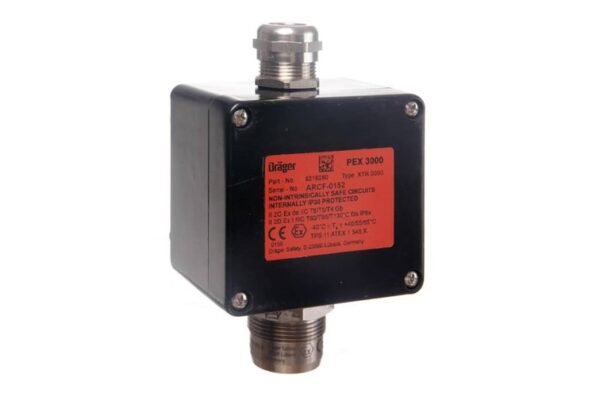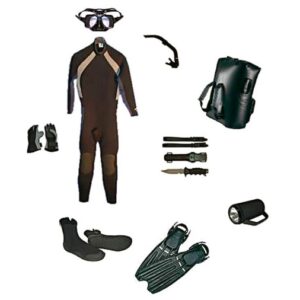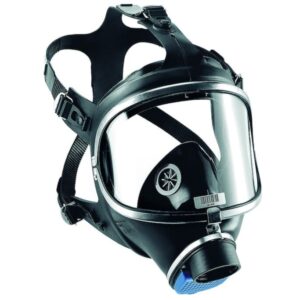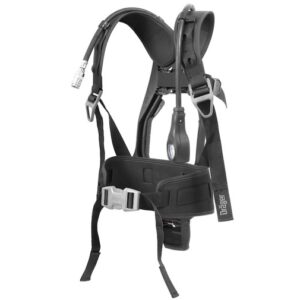Benfit
Six variants of transmitters
You can choose between two measuring ranges (0 … 100 or 0 … 10 %LEL) and two different junction box sizes. The larger junction box provides optional horizontal or vertical cable entry. Where the application asks for the sensor to be mounted remote from the junction box then it is possible to use the remote cable assembly combined with the sensing head of type Polytron SE Ex.
Simple installation
The three core screened cable from the control system terminates within the junction box of the Dräger PEX 3000 by means of three Ex-approved spring terminals. The sensor connects to three different Ex-approved spring terminals. Ex-approved spring terminals are not self loosening and are inherently more reliable then standard screw terminals, therefore self-loosening is no longer an issue!
One-man Calibration
The Dräger PEX 3000 is approved according to the EU-Directive 2014/34/EU to be operated at ambient temperatures ranging from -40 up to +65 °C. This applies to both explosive gas atmospheres and explosive dust atmospheres (Zones 1, 2, 21, and 22).
For applications where it is necessary to detect low concentrations then the transmitters Dräger PEX 3000 type XTR 0010 or XTR 0011 with their special low-drift LC sensor are very suitable. These transmitters reliably detect gas leaks of concentrations up to 10 %LEL.
The catalytic bead sensor
The DQ sensor is based on the well-known catalytic bead technology from Dräger and is designed and manufactured by Dräger for long term stability and resistance against sensor poisons. Furthermore, the DQ sensor uses an innovative non-sintered disc gas inlet therefore the reaction time towards the target gas in now only a few seconds. This fast speed of detection allows for countermeasures to be initiated earlier, therefore guarding against the formation of an explosive atmosphere.




